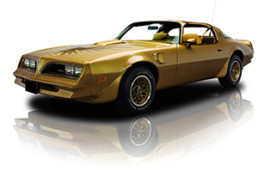Same car different color
In the ’70s, Pontiac auto plants in Norwood, Ohio, and Van Nuys, California, built the Gold Edition Trans Am. Trans Am aficionados will point out that they can tell in which factory the car was painted. They would say that the cars from the Van Nuys factory have more of a greenish tint as opposed to the deeper gold paint found on the Ohio models because EPA regulations were stricter at the California Pontiac plant. While this is an amusing antidote some forty years later, this would be unacceptable in today’s modern automobile manufacturing environment.
Today automotive manufacturers employ strict standards to ensure that every vehicle that comes off the assembly line has the perfect color consistently, regardless of the location of manufacture. In addition, many parts come from a multitude of external vendors, and they must provide consistent part colors to all locations. As a result, it becomes a challenge to match the color and appearance of all of the parts. Therefore, manufacturers need to provide exact specifications to suppliers.
Manufacturers often have specialized coating processes, and their paint will have a unique color formulation process. While visual inspection is necessary, it may not meet quality control standards and demands for exact color matching on all parts. Engineers have found it beneficial to use spectrophotometers such as the multi-angle CM-M6 for objective evaluations and adopting a numerical color inspection system to ensure consistency.
To improve quality and appearance, you would use an instrument like the Rhopoint TAMS, an innovative measuring system for characterizing the visual quality of functional and decorative surfaces. TAMS uses four parameters to produce a comprehensive description of the visual sensation: Contrast, image sharpness, waviness, and dominant structure size (dimension).










